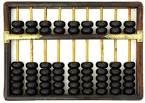ALTERNATIVE LOGIC CIRCUIT
These
are gates that are formed from combination of two logic gates. There are two
types of alternative logic gate:
NAND GATE
A NAND gate is the combination of an AND gate and
NOT gate. It operates the same as an AND gate but the output will be opposite.
Remember, the NOT gate does not always have to be the output leg; it could be
used to invert an input signal also.
LOGIC
SYMBOL FOR THE “NAND” GATE
Notice the circle on output C.
TRUTH
TABLE FOR THE “NAND” GATE
|
INPUT
|
INPUT
|
OUTPUT
|
|
A
|
B
|
C
|
|
0
|
0
|
1
|
|
0
|
1
|
1
|
|
1
|
0
|
1
|
|
1
|
1
|
0
|
NAND
GATE EQUATION
The
NAND gate operation can also be expressed by a Boolean algebra equation. For a
2 – input NAND gate, the equation is:
This
equation read X equal to A and B NOT, which simply means that the output of the
gate is not a logic 1 when A and B inputs are their 1 states.
NOR GATE
A
NOR gate is the combination of both an OR gate and NOT gate. It operates the
same as an OR gate, but the output will be the opposite.
TRUTH
TABLE FOR THE “NOR” GATE
|
INPUT
|
INPUT
|
OUTPUT
|
|
A
|
B
|
C
|
|
0
|
0
|
1
|
|
0
|
1
|
0
|
|
1
|
0
|
0
|
|
1
|
1
|
0
|
NOR
GATE EQUATION
The
NOR gate operation can also be expressed by a Boolean algebra equation. For a 2
– input NAND gate, the equation is:
The
expression is the same as the OR gate with an over bar above the entire portion
of the equation representing the input. This equation read X equal to A or B
NOT, which simply means that the output of the gate is not a logic 1 when A or
B are in their 1 states.
USES OF LOGIC GATES
Logic gates are in fact the building block of
digital electronics, they are formed by the combination of transistors (either
BJT or MOSFET) to realise some digital operations like logical OR, NOT, AND
etc. Every digital product like computers, mobile phones, calculators, even
digital watches contains logical gates.
XOR GATE
The XOR (exclusive – OR) gate acts in the same way
as the logical “either or”. The output is “True” if either but not both, of the
inputs are “true”. The output is “false” or if both inputs are “true”.
LOGIC SYMBOL FOR “XOR” GATE
TRUTH
TABLE FOR THE “XOR” GATE
|
INPUT
|
INPUT
|
OUTPUT
|
|
A
|
B
|
Y
|
|
0
|
0
|
0
|
|
0
|
1
|
1
|
|
1
|
0
|
1
|
|
1
|
1
|
0
|
XOR COMPARATOR
Comparator is a combinational logic circuit that
compares the magnitudes of two binary quantities to determine which one has the
greater magnitude. In order word, comparator determines the relationship of two
binary quantities. A XOR can be used as basic comparator.
As you
can see, the only difference between these two symbols is that the XNOR has a
circle on its output to indicate that the output is inverted.
One of
the most common uses for XOR gates is to add two binary numbers. For this
operation to work, the XOR gate must be used in combination with an AND gate.
To understand how the
circuit works, review how binary addition works:
0 + 0 = 0
0 + 1 = 1
1 + 0 = 1
1 + 1 = 10
If you wanted, you
could write the results of
each of the preceding
addition statements by
using two binary
digits, like this:
0 + 0 = 00
0 + 1 = 01
1 + 0 = 01
1 + 1 = 10
When
results are written with two binary digits, as in this example, you can easily
see how to use an XOR and an AND circuit in combination to perform binary
addition.
If you
consider just the first binary digit of each result, you’ll notice that it
looks just like the truth table for an AND circuit and that the second digit of
each result looks just like the truth table for an XOR gate.
The adder
circuit has two outputs. The first is called the Sum, and the second is called
the Carry. The Carry output is important when several adders are used together
to add binary numbers that are longer than 1 bit.







Comments
Post a Comment